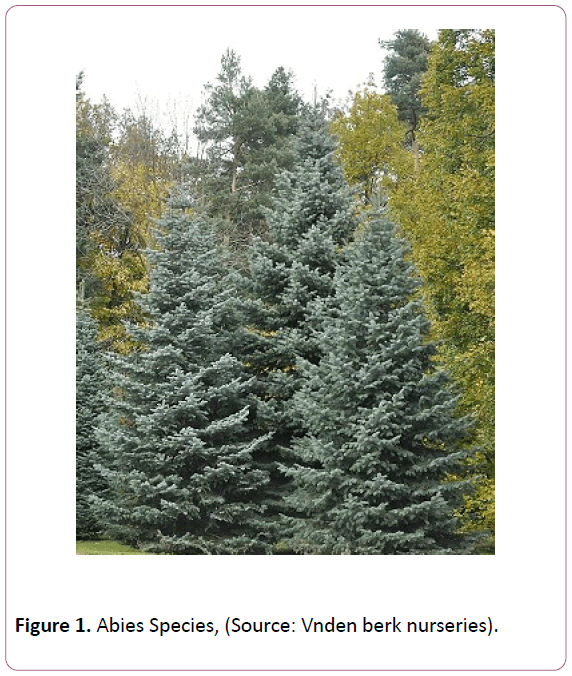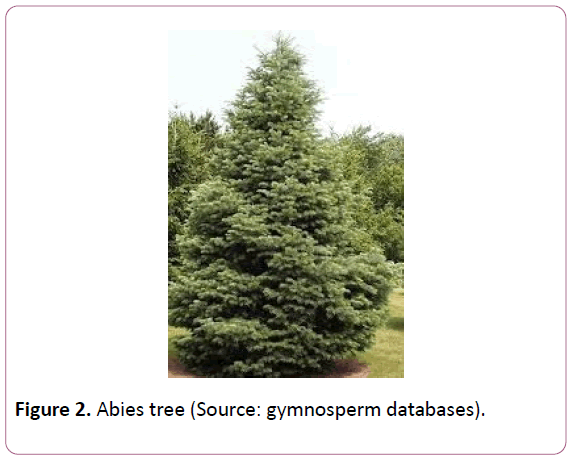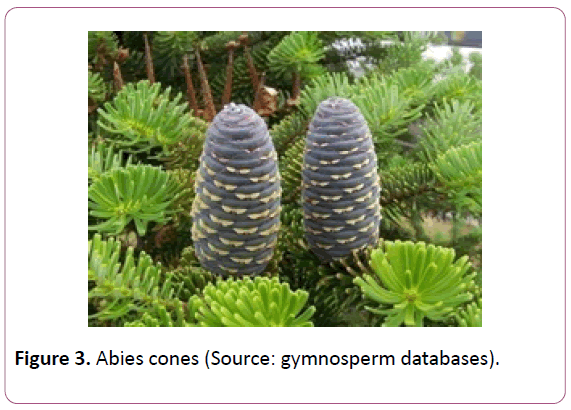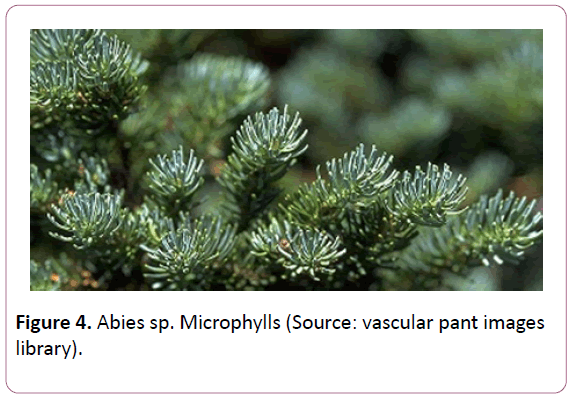Keywords
Dominant; Evolution; Cladistic; Mesozoic; Conifers; Conservation
Introduction
Cycadales are the living representative of the gymnosperms .They repressed the relict lines of the evolution. About 11 genera’s has been reported from all over the world [1]. There fossil history goes back into the Permian, however in the carboniferous time period, they flourish well [2,3]. In Jurassic period a long belt of the gymnosperm was reported in the fossil evidences from the India as well as the other parts of the world. They were at the tremendous diversity at that time [1]. There molecular phylogenetic shows that these plants are near to the extinction [4,5].
The distribution of the Dioon can be observed in all over the world, however in the Mexico there is long belt of the Dioon. Mexico mountain region is considered as the native places of the Dioon. Around 30 species of the Dioon has been reported from all over the world. However the plant body is divided in to the trunk, leaves and the very marvelous kind of the cones. In majority of the cases the Dioon trunk is underground [6]. Trunk around 20-400 cm long, 20-40 cm in diameter, entirely cylindrical, covered with persistent leaf bases, arborescent approximately 300 cm, generally decumbent at greater elevation. The length of the smallest cones male trunk has been observed 20 cm, smallest cones females 95 cm leaves numerous, 20-50 per crown, ascending to descending, 90-190 cm long , 14-25 cm wide, tomatoes green, rigid leaflet, sub opposite, apex acuminate [7].
Dioon species principally occur at the elevation of the 1200-2000 m, on sleep limestone to the higher elevation of the Mexico Gymnosperm have the great evolutionary history, this lines of the evolution was abundant in the Mesozoic time period, however rapid decline can be observe during the end of the cretaceous periods, coniferales are the dominant & most abundant and distributed form of the gymnosperms, they have all the features of the maximum development of the Gymnosperms [11].
Fossil conifers have been reported from the early Jurassic period, they have the highest complexity of the tissue at that era, however the complexity of the tissues has not been observed like the angiosperms anatomy [11].
Conifers are the evergreen trees with the long bushes and the shrubs, they have the long needles with the two kinds of the shoots, these shoots are the dimorphic, one of them is the long shoots and the another one is the spur with the whorls of the leaves or the Microphylles [11] reproduction occurs by the cones, these are the male and the females cones with the woody textures and the appearances, ouvuliferous scales are the point of the taxonomic significances [11]. Commercially the conifers are utilized as the timber and the other wooden purposes. Abies is the genus of the family pinaceae and the order is the coniferales [11].
Abies is the important genus of the coniferales, commonly the plant has been termed as the FIRS. Some of the species of the firs has been termed as the silver firs. Abies names has been proposed by the Nirgil (70-19 BC) for the wood of the plant , the name has been used for the scandivinian fir, silver fir usually found in the high mountainous area (500-2000 m [8-10]. The moist humid condition are required for the cultivation of the firs, the rainfall for the cultivation of the firs should be between the 800-2000 mm, it is distributed in whole of the northern part of the world , they are distributed in the central Europe, south and eastern Germany [8-11].
The plant is erect, pyramidical typical cone shaped, the plant has the very marvelous appearances, likes the typical ornaments [9]. Leaves of the Abies are like the other coniferales needles; in some of the species dimorphism can be observed [8-11].
The genus Abies like the other conifers Picea, cedrus, larix, Pesudosuga, grows in to the northern hemisphere, to the arctic circles (Figures 1-4) [9,11].

Figure 1: Abies Species, (Source: Vnden berk nurseries).

Figure 2: Abies tree (Source: gymnosperm databases).

Figure 3: Abies cones (Source: gymnosperm databases).

Figure 4: Abies sp. Microphylls (Source: vascular pant images library).
Majority of the species of the genus are monoecism. The both sexes can be found on the same plant. Bract of the cones are more longer than the other cones of the genera‘s [8-10].
Some of the characters’ of the species of the ABIES are enlisted as:
Abies alba: grows widely in the Europe, mostly in the hilly area, from the 38 north latitude to the 52 north latitude.
Habit: The height of the A. alba is around 70 m, however variation in the height can be observed, the shape of the tree is pyramidical, later on branches diverge in to the different directions. leaves are needles shaped, form 2 cm to the 2 mm, linear with ridges and the groves, there is proper angels in the diverges of the leaves from the branches [8-11].
Cones: are alre, green, 11 cm to 4 cm, at the both end are the ouvluiferous scaes owth the tapering in to the end. Some of the species of the Abies like the Abies nordamnniana are also very similar to the above species.
Abies anabilis: It grows in to the southern Alaska to the Oregon. They grows from lower elevation to the higher elevation of the mountain, this species of the fir can be found f in to the Olympic peninsula, of the Washington. In the arnmold arboretum of the Harvard University there is one specimen of the Abies anabolic.
The plant is paramedical, spiral like growing at the height of the 80-100 m , in its native habitat , foliage are from the 5 cm to the 3 cm, flattened, linear, occasionally notched, curved slightly, margin entire. The stomata are deep sunken .Resin canal are in margin, cones are of the 10-15 cm and 5-6 cm in height. Some of the species of the Abies are similar with the A nordmaniana, the variations can be seen in the position of the resin canal of the leaves [8-10].
Abies balseamia: Balsum fir, balsam fir is the native of the northern United States and Canada, from Newfoundland to Alberta. The fragrances of the tree are like the balsam. The name balsum is also applied to the other species of the firm also. These species are enlisted as:
Abies lepidocarpa, Abies concolor, it is the cold climate tree, the height of the tree reaches up to the 30-40 meters.
The growth pattern of the A. balsamina is slow. The plant is symmetrical, conical, crown like, it is used for the purposes of the ornamentals [9,11].
Some of the species of the Abies are hybrid. They are the resultant of the fusion of the two CN. The genera species among them Abies borsiiversis, this is the hybrid between the Abies Cephalonia and Abies alba, this plant species grows in to the Bulgaria. It is supposed that hybridization occur between the ice ages.
Abies religiosa: This is commonly known as the oyuanmer fir. According to the version of the IUCN 3.1 the species has been consider the least concerns. The native place of the species is the Mexico. The species is utilized for the timber and the other purposes .continuous logging and the habitat destruction are the reasons for the degradation of the species in the places, so careful conservation of the genus are required for the propagation of the species for the Varity of the purposes [11].
Abies alba: Commonly known as the silver fir. The IUCN version 3.1 says that the species is the least concerns. On the basis of the AOO (area of the occupancy) and the area of the extent (AOE) the species has been declared as the least concern, since the species of the genus is widely spread. This species of the Abies is commercially very valuable and significant.
Abies vejarii: This is commonly known as the vejor fir. The species has been declared as the near threatened, they are endemic to the north east Mexico , on the basis of the area of the occupancy and the extent it has been reported that the species members are degrading due to the natural fires and the logging and the degradation of the habitat [11] .
Abies numicida: This is known as the Algerian fir. The genus has been declared as the critically endangered. This species is threatened to the verity of the reasons these are the forest fires and the logging, another reasons is the degradation of the habitat [11].
Alba dense: this is commonly known as the Sikkim fir. Previously this species is placed in the species termed as the Abies spectibilis, later on it was found that on the basis of the morphological and the phylogenetic evidences there is marked difference in the spectibilis, so it should be placed in to the separate species dense.
Some of the species of the Abies also follows the same features with minor difference, so they can be included as:
Recurvata, A. anabilis, A. squamata, A. sibrica ,A. grandis, A .gutalensis
Uses of the Abies
The Abies balsamic popularly known as the charismas tree. It is worshipped in the occasion of the Christmas day as a festival tree.
• The resin is used to produces the Canada balsam.
• It was traditionally used for the treatments of the cold and the other diseases.
• The resin is used for the purposes of the glues.
• It is used for the formation of the optical instrument compounds.
• It is used for the preparation of the permanent slides of the tissues.
• The resin is important medicinally, the Canada balsam has been used for the treatment of the scurvy.
• The wood of the tree is used for the construction of the many products of the commercial values.
• The pulp is uses for the manufacture of the paper.
• The balsam is used for the air freshener.
• The leaves of the Abies are Ayurveda’s in nature; it is used for the treatment of the variety of the diseases.
• The resin is bronchodilator.
In majority of the cases the resin is used for the treatment of the variety of the respiratory disorders.
Conclusion
The review shows the basic points of the Abies genus with some species, Abies is the major conifers in the conifers belt of the northern hemisphere as well in India in the Himalayas range. Majority of the species of the Abies are at the critically endangered due to the habitat destruction and the natural reason like the forest fires and the climate change so we need to conserve these lines of the evolution for the maintenance of the metabolites as well as the phylogenetic genes for the tracing out the evolution.
References
- IPNI (2010) Plant Name Details for Dioon purpusii.
- Donaldson JS, Vovides A, Chemnick J (2003) Dioon purpusii in IUCN 2010". IUCN Red List of Threatened Species. International Union for Conservation of Nature and Natural Resources.
- Carlos, I (2003) Morphological and geographical variations of the cycads Dioon edule, Botanicla journal of the linaean society 141: 465-470.
- Halbert SE (2010) Triology.
- Dallia M (2016) Gikgetin or isogingetin the dimethyl menthoflavones of Dioon edule. European journal of the medicnal plants 16:1-7.
- Dyer WTT (1883) Cycadaceae. European Journal of Medicinal Plants.
- Gonzalez-Astrorga J (2003) Revision of the Dion tomenserral (Zamiaceae) from western mexico, phytologia 83: 1-6.
- Moawad D, Amir E (2016) Total Phenolic, Total Flavonoid And Antioxidant Activity Of Some Plants Of Gemnosperms: Phytochemical Investigation Of Dioon Edule Lindl. Leaves Planta Med 82: 1-46.
- Standley PC (1920) Trees and Shrubs of Mexico. Smithsonian Institution, Washington D.C.: U.S. National Herbarium.
- Vovides PA(2003) A new species in the genus Dioon (Zamiaceae) form north central oaxaco mexico. Botanicla Journal of Linaen Society141: 471-476.
- Vovides A, Chemnick J, Gregory T(2010) Dioon spinulosum. The IUCN Red List of Threatened Species 2010: e.T42149A10667709.





